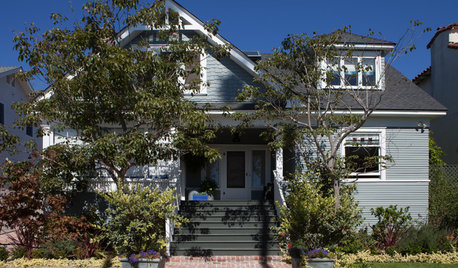2 young ash trees, emerald ash borer getting close replace them?
mdo003
10 years ago
Related Stories

GARDENING GUIDESTree Care: Common Tree Diseases and What to Do About Them
Learn to recognize trees that may be affected by diseases or pests so you can quickly take action
Full Story
WINTER GARDENINGHow to Help Your Trees Weather a Storm
Seeing trees safely through winter storms means choosing the right species, siting them carefully and paying attention during the tempests
Full Story
REMODELING GUIDESYour Floor: An Introduction to Solid-Plank Wood Floors
Get the Pros and Cons of Oak, Ash, Pine, Maple and Solid Bamboo
Full Story
LANDSCAPE DESIGNThe Unparalleled Power of Trees
Discover the beauty and magic of trees, and why a landscape without them just isn't the same
Full Story
HOUZZ TOURSHouzz Tour: A 1905 Cottage Gets a Major Family Update
Historic Boston meets outdoors Oregon in this expanded California home
Full Story
KITCHEN DESIGNGet Ideas from 10 Kitchen Makeovers
Share your thoughts on gorgeous kitchen transformations from Boston to Bristol. Which is your favorite?
Full Story
TRIMTrim Color Tips: Get Your White Trim Right
Set off wood tones, highlight architectural features, go minimalist ... white trim is anything but standard when you know how to use it
Full Story
GARDENING AND LANDSCAPINGGet It Done: Clean and Prep the Patio
Haul out the hose and bid cobwebs farewell. It's time to renew your outdoor room for relaxing, dining and entertaining
Full Story
LANDSCAPE DESIGN7 Great Trees for Summer Shade and Fall Color
These landscape-pro faves straddle the seasons beautifully. Could one enhance your own yard?
Full Story
LANDSCAPE DESIGNFlood-Tolerant Native Trees for Soggy Soil
Swampy sites, floodplains, even standing water ... if you've got a soggy landscape, these trees are for you
Full Story








ken_adrian Adrian MI cold Z5
whaas_5a
Related Professionals
Medford Landscape Contractors · Florham Park Landscape Contractors · Lady Lake Landscape Contractors · Lakewood Landscape Contractors · Melrose Park Landscape Contractors · Nutley Landscape Contractors · Vineyard Landscape Contractors · Amesbury Siding & Exteriors · Dumont Siding & Exteriors · Iowa City Siding & Exteriors · Foothill Farms Decks, Patios & Outdoor Enclosures · Norman Decks, Patios & Outdoor Enclosures · Sun Lakes Decks, Patios & Outdoor Enclosures · Wildomar Decks, Patios & Outdoor Enclosures · Glendale Decks, Patios & Outdoor Enclosureswisconsitom
whaas_5a
mdo003Original Author
Toronado3800 Zone 6 St Louis
saccharum
alabamatreehugger 8b SW Alabama
wisconsitom
whaas_5a
wisconsitom
whaas_5a